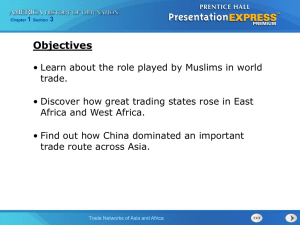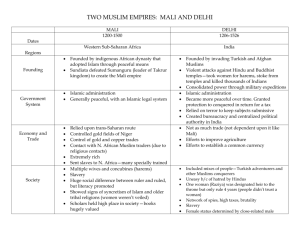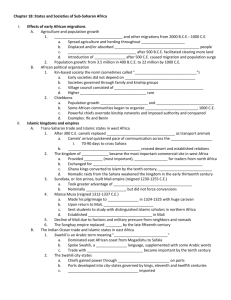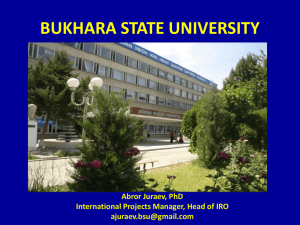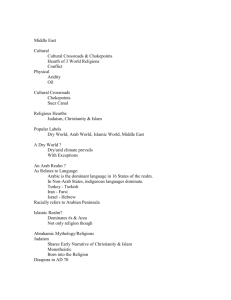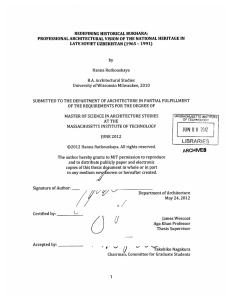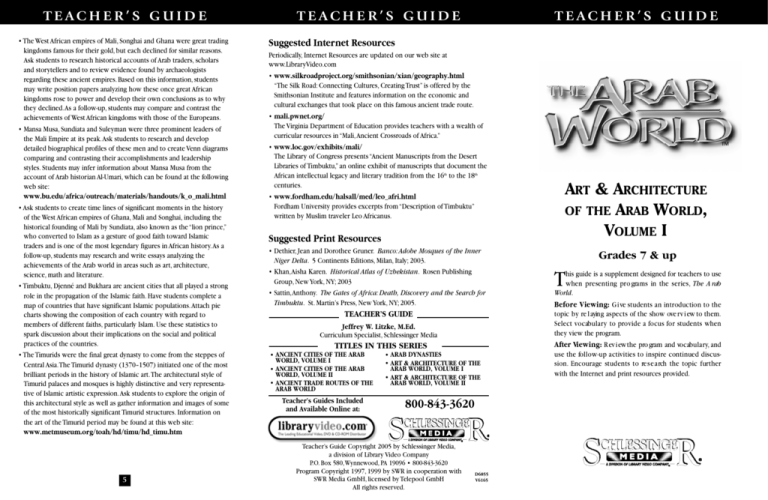
TEACHER’S G UIDE
• The West African empires of Mali, Songhai and Ghana were great trading
kingdoms famous for their gold, but each declined for similar reasons.
Ask students to research historical accounts of Arab traders, scholars
and storytellers and to review evidence found by archaeologists
regarding these ancient empires. Based on this information, students
may write position papers analyzing how these once great African
kingdoms rose to power and develop their own conclusions as to why
they declined.As a follow-up, students may compare and contrast the
achievements of West African kingdoms with those of the Europeans.
• Mansa Musa, Sundiata and Suleyman were three prominent leaders of
the Mali Empire at its peak.Ask students to research and develop
detailed biographical profiles of these men and to create Venn diagrams
comparing and contrasting their accomplishments and leadership
styles. Students may infer information about Mansa Musa from the
account of Arab historian Al-Umari, which can be found at the following
web site:
www.bu.edu/africa/outreach/materials/handouts/k_o_mali.html
• Ask students to create time lines of significant moments in the history
of the West African empires of Ghana, Mali and Songhai, including the
historical founding of Mali by Sundiata, also known as the “lion prince,”
who converted to Islam as a gesture of good faith toward Islamic
traders and is one of the most legendary figures in African history.As a
follow-up, students may research and write essays analyzing the
achievements of the Arab world in areas such as art, architecture,
science, math and literature.
• Timbuktu, Djenné and Bukhara are ancient cities that all played a strong
role in the propagation of the Islamic faith. Have students complete a
map of countries that have significant Islamic populations.Attach pie
charts showing the composition of each country with regard to
members of different faiths, particularly Islam. Use these statistics to
spark discussion about their implications on the social and political
practices of the countries.
• The Timurids were the final great dynasty to come from the steppes of
Central Asia.The Timurid dynasty (1370–1507) initiated one of the most
brilliant periods in the history of Islamic art.The architectural style of
Timurid palaces and mosques is highly distinctive and very representative of Islamic artistic expression.Ask students to explore the origin of
this architectural style as well as gather information and images of some
of the most historically significant Timurid structures. Information on
the art of the Timurid period may be found at this web site:
www.metmuseum.org/toah/hd/timu/hd_timu.htm
5
TEACHER’S GUI DE
TEACHER’S G UIDE
Suggested Internet Resources
Periodically, Internet Resources are updated on our web site at
www.LibraryVideo.com
• www.silkroadproject.org/smithsonian/xian/geography.html
“The Silk Road: Connecting Cultures, Creating Trust” is offered by the
Smithsonian Institute and features information on the economic and
cultural exchanges that took place on this famous ancient trade route.
• mali.pwnet.org/
The Virginia Department of Education provides teachers with a wealth of
curricular resources in “Mali,Ancient Crossroads of Africa.”
• www.loc.gov/exhibits/mali/
The Library of Congress presents “Ancient Manuscripts from the Desert
Libraries of Timbuktu,” an online exhibit of manuscripts that document the
African intellectual legacy and literary tradition from the 16th to the 18th
centuries.
• www.fordham.edu/halsall/med/leo_afri.html
Fordham University provides excerpts from “Description of Timbuktu”
written by Muslim traveler Leo Africanus.
Suggested Print Resources
ART & ARCHITECTURE
OF THE ARAB WORLD,
VOLUME I
• Dethier, Jean and Dorothee Gruner. Banco: Adobe Mosques of the Inner
Niger Delta. 5 Continents Editions, Milan, Italy; 2003.
• Khan,Aisha Karen. Historical Atlas of Uzbekistan. Rosen Publishing
Group, New York, NY; 2003
• Sattin,Anthony. The Gates of Africa: Death, Discovery and the Search for
Timbuktu. St. Martin’s Press, New York, NY; 2005.
TEACHER’S GUIDE
Jeffrey W. Litzke, M.Ed.
Curriculum Specialist, Schlessinger Media
TITLES IN THIS SERIES
• ANCIENT CITIES OF THE ARAB
WORLD, VOLUME I
• ANCIENT CITIES OF THE ARAB
WORLD, VOLUME II
• ANCIENT TRADE ROUTES OF THE
ARAB WORLD
Teacher’s Guides Included
and Available Online at:
• ARAB DYNASTIES
• ART & ARCHITECTURE OF THE
ARAB WORLD, VOLUME I
• ART & ARCHITECTURE OF THE
ARAB WORLD, VOLUME II
800-843-3620
Teacher’s Guide Copyright 2005 by Schlessinger Media,
a division of Library Video Company
P.O. Box 580,Wynnewood, PA 19096 • 800-843-3620
Program Copyright 1997, 1999 by SWR in cooperation with
SWR Media GmbH, licensed by Telepool GmbH
All rights reserved.
D6855
V6165
Grades 7 & up
T
his guide is a supplement designed for teachers to use
when presenting pro grams in the series, The A rab
World.
Before Viewing: G i ve students an introduction to the
topic by re l aying aspects of the show ove rv i ew to them.
Select vo c ab u l a ry to provide a focus for students when
they view the program.
After Viewing: R ev i ew the pro gram and vo c ab u l a ry, and
use the fo l l ow-up activities to inspire continued discussion. Encourage students to re s e a rch the topic further
with the Internet and print resources provided.
Program Overview
Episode 2: Djenné
Developing at important cro s s roads on ancient tra n s - S a h a ran and Silk Road
trade routes, the legendary cities of Timbuktu and Djenné in Mali and the city
of Bukhara in what is today Uzbekistan once served as renowned centers of
Muslim sch o l a rship. E a ch city features unique examples of Islamic arch i t e cture, i n cluding some of West Afri c a ’s oldest earthen mosques and Centra l
Asia’s most prominent and impressive medieval structures.While Bukhara has
a population of a quarter million people and is a growing urban are a ,
Timbuktu and Djenné are struggling economically and are both thre a t e n e d
by the encroachment of desert sands.
Djenné, Mali was founded in the 13 century near Jenne-Jenno, the oldest
known city in sub-Saharan Africa. It grew into a trading and market center
expediting commerce between merchants of semiarid Sudan and the more
tropical geographical area of West Africa.Around the mid-17th century, Djenné
became re n owned as a center of Muslim learning and facilitated the spread
of Islam throughout the re gi o n . While many of the city’s traditional earthen
structures have survived to this day, the original Great Mosque of Djenné fell
into decay by the 19th century. However, this famous mosque, the wo r l d ’s
largest mud structure, was rededicated in the early 20th century.
Mongols — An ethnic group from Central Asia known for its nomadic
th
Vocabulary
Episode 1: Timbuktu
Sahel — An increasingly dry geographic area in Africa that acts as a
Ti m b u k t u , founded around 1100 CE by nomadic Tuaregs, was incorpora t e d
into the Mali Empire in West A f ric a in the late 13th or early 14th century.The
city became a thriving commercial hub for the tra n s - S a h a ran gold and salt
trade, and grew into the center of Islamic culture and learning, with universities and libra ries attracting sch o l a rs from all over the A rab world.Ti m b u k t u
fe a t u res the env i ro n m e n t a l ly threatened earthen mosques of Djinguere b e r,
Sanko re and Sidi Yahi, which we re built during the 14th and early 15th centuries.The city declined after a Moroccan invasion in the 16th century and
was not rediscovered by Europeans until the 19th century.
transitional zone between the Sahara Desert and the more tropical
savannah in the South.
Bozo — An indigenous people known for their fishing skills living along
the Niger River in Mali,West Africa.
Animist — A person who believes that both spiritual beings and spiritual
forces in nature influence our life, health and security.
Islam — A religion practiced by more than one billion Muslims,“Islam”
comes from the Arabic word for surrender.
Vocabulary
religion.
El Dorado — The mythical city of gold, thought to be in South America,
which inspired Europeans during the Age of Exploration.
nomads — People who move from place to place as the seasons change in
search of provisions and arable land.
mosque — Also known as a masjid, a Muslim place of worship.
minaret — A tall thin tower connected to a mosque from which people of
the Islamic faith are called to prayer.
surrounding areas.
Zoroaster — A Persian prophet and teacher who founded the religion
of Zoroastrianism around 600 BCE.
czar — The absolute monarch and ruler of Russia.The word “czar” is
derived from Caesar.
hamam — A word that means “public bath” or “bath house” in Arabic.
Follow-up Discussion Questions
• Who was Heinrich Barth? Explain the significance of his journeys and
describe how he contributed to the West’s knowledge of the legendary
city of Timbuktu.
• The narrator explains that “learning was the wealth of Timbuktu.” Offer
evidence to support or refute this statement.
• Describe the traditional building materials used in Djenné.What
economic, geographical and environmental conditions contributed to
this unique style of construction?
• Who was Koumboro? Explain his role in the adoption of Islam in
Djenné and how this cultural change affected the town’s architectural
development.
Surah — A chapter in the Koran.
infidel — A person who doubts or rejects a particular belief system or
ways and formation of one of the largest empires in world history.
Uzbeki — One who lives in the country of Uzbekistan or in the
Episode 3: Bukhara
Founded around the first century CE, Bukhara was a prominent trade and cultural center when the Arabs captured it in 709.The city became the capital of
the Persian Samanid dynasty in the 9th–10th centuries, and developed into the
heart of Central Asia’s Islamic community. Bukhara was known as the holy
Islamic center of the Silk Road, and served to connect culture and commerce
between East and West. The city was later conquered by the Uzbek
Shaybanids in the 16th century and is now part of the independent country of
Uzbekistan. Bukhara has an impressive architectural heritage including major
mosques and madrasas and features the Ark Fortress, its oldest structure.
Koran — The holy writings of Islam.
Tuareg — A member of a nomadic, Berber-speaking people living in North
Vocabulary
Africa.
Silk Road — A historical trade route that operated from around 200 BCE
until the 16th century, which involved cultural and economic exchanges
between East and West.
Timurid — A dynasty in Central Asia founded by Timur (Tamerlane) that
thrived between the 14th and 15th centuries.
madrasa — An Islamic religious school.
(Continued)
• When did the Arabs secure a footing in Bukhara? Analyze the spread of
Islam as an example of cultural diffusion in Central Asia.
• What is the significance of the year 1920 in Bukhara’s history? Compare
and contrast life in Bukhara before and after this time.
• What is Lab-i-Hauz? Describe its role in the city of Bukhara and analyze
how the components of culture work together to make each culture
unique.
Follow-up Activities
• Bukhara, with its domed market halls, was a famous city along the Silk
Road — a network of ancient trade routes that provided cultural and
economic links among peoples from the Mediterranean to the Far East.
Break students into small groups and assign each group to research a
specific location along the Silk Road. Students may develop a poster
advertising the goods and technologies that were produced and traded
at their location on this famous ancient trade route.They may choose
from places such as Bukhara, Luoyang and Palmyra.A wealth of
information on the Silk Road may be found at the following web site:
www.ess.uci.edu/~oliver/silk.html
(Continued)
2
3
4

